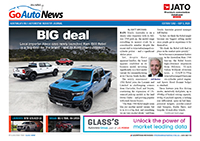 1 Jul 2002
1 Jul 2002
By CHRIS HARRIS
The second-generation Forester, again based on the smaller Impreza platform, is an evolutionary step, with slightly larger packaging, an improved cabin presentation and more refinement.
Key to the Mk2 Forester’s appeal is a gutsy 112kW/223Nm 2.5-litre four-cylinder engine, replacing the 2.0 unit. Gearbox choices remained a four-speed automatic or five-speed manual. As before, drive is permanent 4WD.
There was a year’s delay for the turbo Forester, now called XT instead of GT. It produces 155kW/320Nm.
Model demarcations are X, XS, XS Luxury and XT, with a special edition model appearing in August ’03.
As per usual, a small number of specification and trim changes marked each coming model year (MY in Subaru-speak) around August.



















